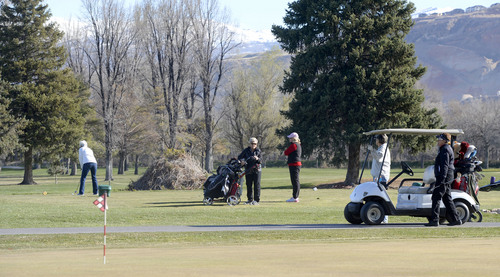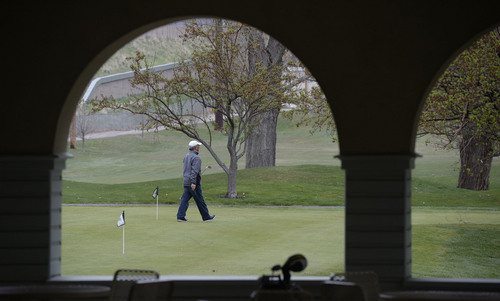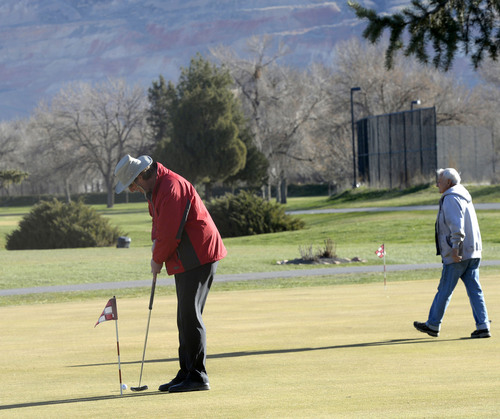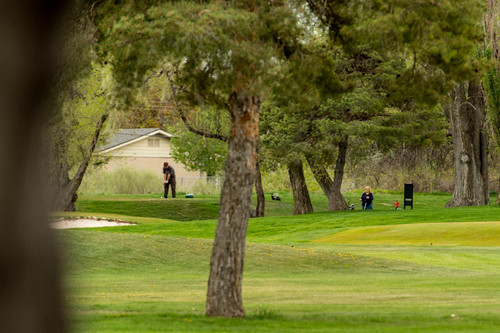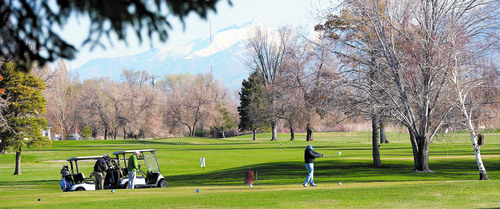This is an archived article that was published on sltrib.com in 2014, and information in the article may be outdated. It is provided only for personal research purposes and may not be reprinted.
The potential closure of one or more Salt Lake City golf courses made me wonder about Ralph Frandsen, thinking back to the last time a course was shut down in this town.
In 2008, the historic University of Utah layout was about to be replaced by the Utah Science Technology Research complex. Frandsen was forecasting a gloomy outcome for himself and other members of his regular foursome.
"It's going to shorten our lives," he said.
Well, he was exaggerating. Frandsen celebrated his 98th birthday this month. Yet he's a living example of the fallout of a golf course's closing. So am I.
Yeah, I'm biased about this subject. Decrying the closing of Forest Dale, Glendale or any of Salt Lake City's golf venues is my default reaction. But I have some credibility on this subject as a golfer who lost his course — and practically stopped playing.
City Council members who vote to close any course will be perpetuating a myth that the golfers will just move to the next course. Forest Dale, for example, is only the equivalent of three par-5s from Nibley Park. But that distance is insurmountable, I'm telling you.
Golf is an addiction for some players, but it is merely a habit for most of us. Having played upwards of 1,000 holes annually at the University GC, I play maybe one-tenth of that amount now. Everything changed once the heavy equipment arrived on campus.
Frandsen and his buddies relocated to Fore Lakes GC in Taylorsville, with an executive course that resembles their former home's length and difficulty level. But "we don't play nearly as much as we did at the University," Frandsen told me this week.
And that's among the side effects of closing a course, which the City Council must consider. Public courses have character — and characters, like the golfers I miss from our days at the U.
I'll never forget Ellen, who would play three balls as a single and creep up just behind the next foursome; Bob, always accompanied by his German shepherd; Doug, the eventual three-time State Amateur champion; and Bill, who teed off so early that he routinely used a flashlight on the first three holes.
That's what will be lost if a Salt Lake City course closes. The administration's mistake was deferring needed improvements for too long, while increased competition, economic recession and hot summers all conspired against the golf program. Now, something Draconian is almost certain to happen.
A move away from culinary water could save as much as $500,000 a year, according to an estimate. But that would require a big investment in a new irrigation system at the classic Bonneville GC, where the nightly dragging of hoses remains standard practice.
That method is antiquated, and so is the belief that municipal golf courses should be self-sustaining. These venues are recreational amenities, economic drivers and quality-of-life elements. They never were intended to be profit centers.
I'm glad they understand that in Smithfield, home to Birch Creek GC — now No. 1 among existing courses on my most-played list. Smithfield recently allotted $100,000 for sprinkler system repairs. That's "a tremendous investment," said city manager Jim Gass, recognizing how the course distinguishes the Cache Valley town.
The same is true of Salt Lake City's golf offerings. My solution would be to reconfigure Rose Park into a shorter, nine-hole course, while selling some of the property to ease the budget deficit and fund improvements. Closures, however, seem more likely to occur.
"I can't imagine that happening," said Frandsen, who's been following the developments as a Salt Lake City resident. Yet he and I know such things are among the realities of life, for the worse.
Twitter: @tribkurt


